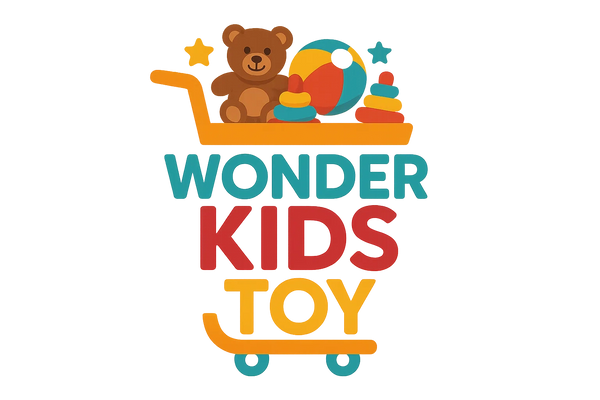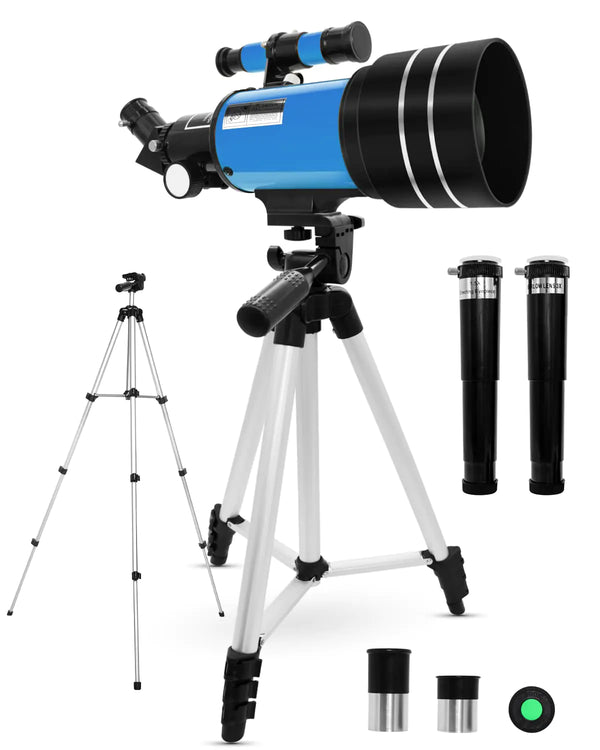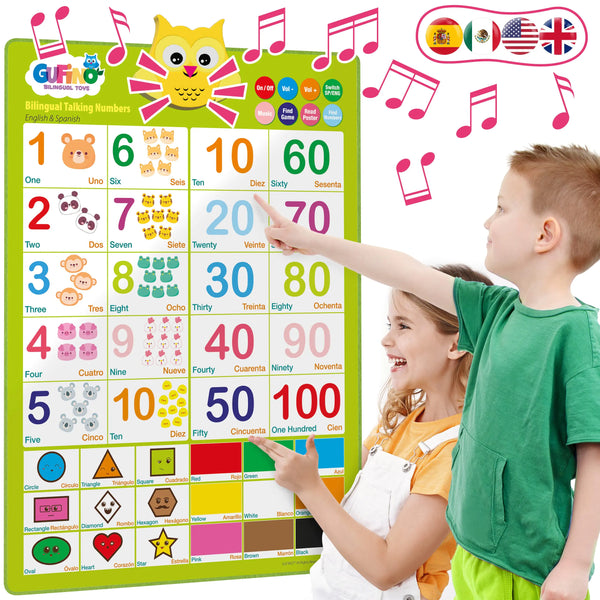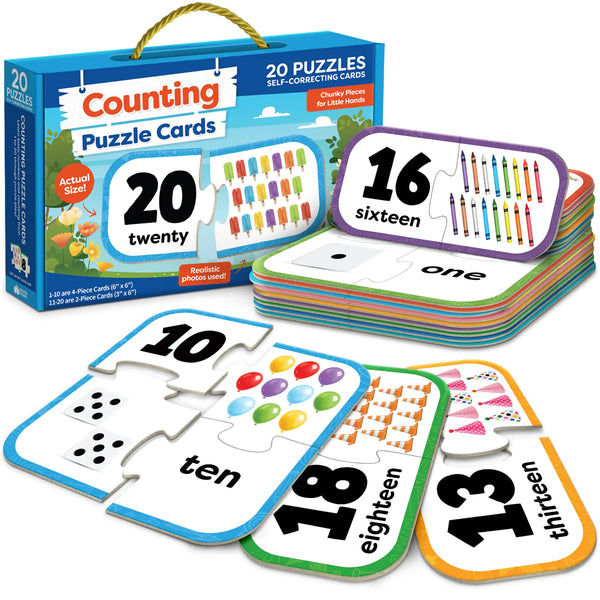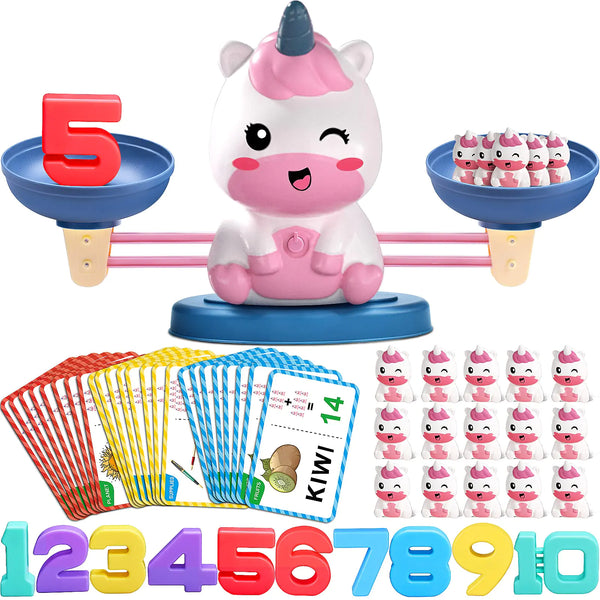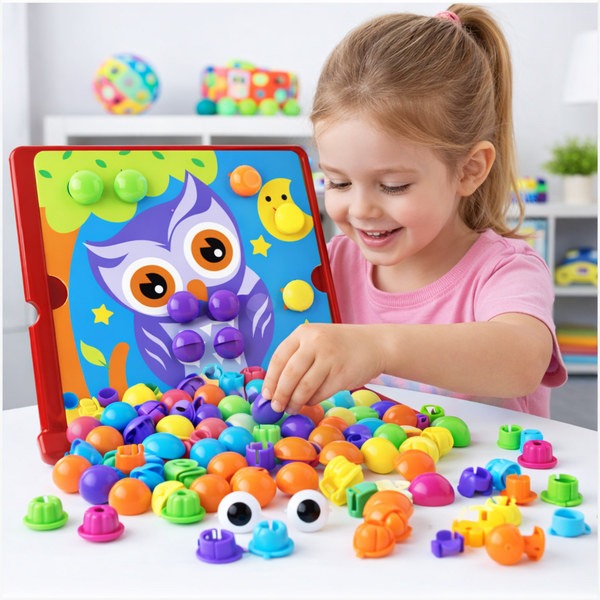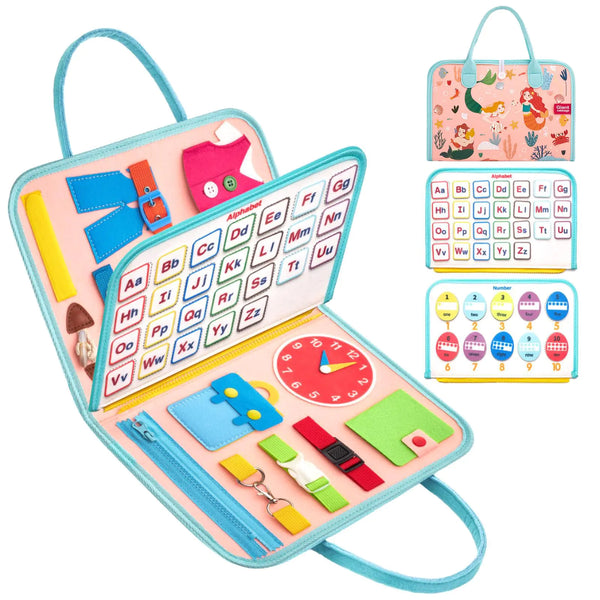Hi there, parents! Are you ready to make playtime a learning adventure? STEM toys for 2-year-olds are not just fun. They are tiny building blocks for big futures.
Our STEM toys for toddlers, like Grippies Builders and Biggo Blocks, grow with your child. They blend learning and laughter at every step.
Imagine wooden blocks that teach shapes and colors or magnetic tiles that click into endless creations. These educational toys for 2-year-olds are made from eco-friendly materials, so you can smile knowing they're safe and sturdy.

Every piece is designed to boost problem-solving, motor skills, and creativity. All while feeling like pure play!
Looking for peace of mind? We've got you covered. Enjoy free shipping over $29.99 and a 100% satisfaction guarantee. Let's make every play session a stepping stone toward your child's bright future, one block at a time!
Key Takeaways
- STEM toys for toddlers, like HABA’s magnetic blocks and wooden sets, build skills while fostering joy.
- Eco-friendly materials ensure safety and durability for curious little hands.
- Free shipping and hassle-free returns make choosing the right toys stress-free.
- Open-ended play with toys like Plus-Plus® BIG encourages creativity and problem-solving.
- Everyday items like measuring cups can become simple STEM tools for playful learning.
What Are STEM Toys and Why Are They Important for Toddlers?

Let’s start with the basics! STEM toys are tools that introduce kids to science, technology, engineering, and math through play. For 2-year-olds, this means exploring with developmental toys like stacking cups or shape sorters. These learning toys focus on hands-on discovery rather than just reading.
Understanding STEM Education at the Toddler Level
Imagine your child fitting a round peg into a circular hole. That’s early engineering! STEM for toddlers means nurturing curiosity through open-ended play. Building towers or pouring water helps them solve problems. It’s all about joyful exploration, without screens or textbooks.
The Science Behind Early Cognitive Development
Scientists say play builds brains! Every block your child stacks strengthens neural pathways. Cognitive development toys, like magnetic tiles or sorting games, help kids understand patterns and cause-and-effect relationships. Dr. Jane Smith, a child development expert, says, “Play is the brain’s first lab!”
How Play Shapes the Growing Brain
- Problem-solving: Puzzles teach trial-and-error.
- Creativity: Play kitchens or animal figurines spark imaginative scenarios.
- Confidence: Mastering a new toy builds “I did it!” pride.
Remember: Every “Why?” your child asks while playing is a STEM moment! When they dump and fill buckets, that’s early math and physics. You’re helping grow future innovators, one block at a time!
Developmental Milestones for 2-Year-Olds to Consider

Watching your toddler grow is such a joyful journey! Let’s celebrate the toddler developmental milestones that make this age so magical. Around two, you’ll notice your little one doing things like stacking blocks, scribbling with crayons, or naming body parts when you ask! These moments are golden opportunities to nurture STEM learning through play.
- Physical progress: Running, kicking balls, or using hands to unscrew lids pair perfectly with building toys.
- Curiosity blooms when sorting shapes, matching colors, or pressing buttons on a busy board. These actions build the foundation for a two-year-old's development in problem-solving.
- Language leaps: Two-word phrases like “more milk” or pointing to objects when named. Storybooks and interactive toys fuel this growth!
- Social smiles: Imitating actions, hugging stuffed animals, or showing empathy when a sibling cries. Play kitchens or pretend tools encourage this.
Every child’s pace is unique—some might stack four blocks while others focus on naming animals. That’s okay! When choosing toys, match their interests. A toddler mastering developmental milestones like turning pages will love board books. Another way to explore textures might be sensory bins. STEM learning doesn’t mean complex kits—it’s in everyday play!
Let’s pick toys that grow with them. A Montessori geometric puzzle? It builds shape recognition *and* pride when pieces click into place. A knobbed wooden block set? Perfect for those tiny hands practicing grip. Celebrate each small victory—you’re their first teacher!
The Benefits of STEM Toys for 2-Year-Old Development

Every play moment with STEM toys is a stepping stone for your child’s growth! Let’s explain how these tools nurture skills they’ll use throughout their lives.
First, cognitive development toys like shape sorters or pattern games spark curiosity. Think of that “aha!” moment when your little one places a triangle in its slot—this builds problem-solving and memory. Parents love seeing kids count blocks or name colors during play, turning fun into foundational learning.
Fine motor skills toys, such as Playskool Busy Gears or wooden puzzles, help tiny hands grow strong. Twisting gears or stacking LEGO Duplo bricks strengthens coordination, preparing them for writing and everyday tasks. Gross motor skills are also boosted—pushing toy trucks or balancing blocks work those big muscles!
Language blooms as you chat about what you’re doing together. “Look, the red block fits here!” These conversations turn play into vocabulary lessons. Even problem-solving toys like marble runs teach persistence: “Can we make the ball roll this way?” Every trial and success builds resilience.
- Play-based learning with problem-solving toys boosts confidence and creativity.
- STEM activities like Kiwi Co’s Koala Crate monthly kits turn curiosity into lifelong skills.
- Durable fine-motor skills toys, like interlocking blocks, stand up to little hands’ exploration.
Every giggle while building or solving a puzzle teaches them to think, create, and communicate. Let’s make learning so fun that they don’t notice how much they’re growing!
Top STEM Toys for 2 Year-Olds: Our Comprehensive List

Ready to explore the best STEM toys for toddlers that spark curiosity and growth? We’ve rounded up educational toys for 2-year-olds that parents and experts love. These picks are more than playthings—they’re developmental toys designed to nurture tiny learners!
- LeapFrog Learning Hamburger: This award-winning toy teaches sequencing and shape recognition through pretend cooking. Watch your child “cook” veggies while building hand-eye coordination!
- VTech Sort & Discover Activity Wagon: A rolling station for color matching, counting, and motor skill practice. Perfect for on-the-go learning!
- 32-Piece Magnetic Construction Set: Introduce early engineering with magnetic pieces! This set is excellent for spatial reasoning (with adult supervision for little hands).
- HABA USA Playsets: These toys boost problem-solving and social skills, from eco-friendly tracks to chunky puzzles. Their board games even encourage turn-taking!
“Our toddler stays focused for hours with the HABA puzzle set—it’s magical!” – Sarah, mom of a 2-year-old
HABA’s toys are crafted from safe, sustainable materials and certified for your peace of mind. Real families and experts test these picks, so you know they’ll inspire wonder and learning. Ready to watch those little minds grow? These toys aren’t just fun—they’re a step toward significant discoveries!
Building Blocks and Construction Toys for Budding Engineers

Imagine the excitement when your child builds a castle or rocket from small pieces! Construction toys for toddlers are more than fun—they're learning labs. They help kids explore balance, shapes, and gravity.
These toys turn everyday spaces into creative workshops. Curiosity and creativity meet in these spaces!
Magnetic toys like Magna-Tiles create "aha!" moments. The click of pieces together boosts confidence. Blockaroo Magnetic Foam Bath Building Blocks make STEM fun even in the tub!
These sets are safe and non-toxic. They have rounded edges for worry-free play.
Interlocking block systems fit perfectly in little hands. Wooden blocks offer a classic, tactile experience. They help kids learn about weight and foster a love for creating.
“Construction play builds resilience. Each toppled tower teaches, ‘Try again!’” says Dr. Lena Torres, child development expert. “It’s where mistakes become stepping stones.”
- Safe materials: Look for BPA-free plastics and FSC-certified wood
- Open-ended play: Kits that grow with their skills, encouraging years of imaginative use
- Portability: Take play outdoors or on trips with lightweight, durable designs
Look for sets with expandable pieces. Magnetic starter kits add new shapes as skills grow. Pair them with wooden blocks for a mix of textures. Kids learn to sort, count, and tell stories with their creations.
These toys are more than play. They're the first step to seeing the world as a place to build, break, and rebuild.
Simple Science Exploration Toys for Curious Toddlers

Imagine the joy on your child’s face when they see a ball roll down a ramp or watch colors mix in a simple experiment! Science toys for toddlers make learning fun. These STEM learning toys are easy to use and don't require a degree. All you need is your enthusiasm to explore together!
Begin with toys that show cause and effect, like the KiwiCo Wind Play Lab. Here, kids blow through a straw to move objects. Or try Magicube™ magnetic blocks, where they see how pieces stick together while building. These toys ask, “What happens if I turn this?”
- KiwiCo Wind Play Lab: Teaches air movement through hands-on experiments.
- Science Academy Slime Lab: Safe, non-toxic kits where toddlers mix gooey mixtures to learn textures and reactions.
- Snack Science Kits: Edible experiments like baking-soda volcanoes made with kitchen ingredients!
Look for brands like HABA USA, which offer eco-friendly options. Their Magnetic Blocks and Mirror Blocks mix learning with creativity. They help kids understand concepts like gravity and reflection. Ask questions like, “Why do you think that happened?” to encourage early scientific thinking.
Every “why?” they ask is a chance to grow their curiosity. With the right science toys for toddlers, you’re not just playing. You’re planting seeds for a lifelong love of discovery!
Mathematical Concepts Through Play: Counting and Sorting Toys

Let’s make playtime a math adventure without stress! Counting, sorting, and pattern-recognition toys are great for sparking curiosity about numbers and shapes. Imagine your toddler laughing as they stack blocks or group colored bears. These moments help build early math skills without them even realizing it!
Shape Sorters and Pattern Recognition
Shape sorters, like the Montessori Wooden Beads Sequencing Toy Set, are amazing! Watch as little hands line up blocks or lace beads to create patterns. These toys teach sequences and spatial awareness. Ask, “Which shape fits here?” to boost problem-solving skills. Plus, stacking cups or sorting colored rings builds confidence in recognizing order.
Early Counting Games and Toys
- Counting Bears let kids sort by color or size while practicing “one, two, three!”
- Yetonamr Counting Dinosaurs adds a prehistoric twist to number practice.
- Unifix Cubes click together for hands-on grouping and counting fun.
Tip: Turn snack time into a game! “How many berries are on your plate? Let’s count together!”
Size and Measurement Introduction Tools
Sorting toys like Plus Plus bricks or TOMYOU blocks helps toddlers compare sizes. Stack blocks and say, “This tower is taller!” or sort big vs. small cars. Simple questions like, “Which cup holds more water?” make learning feel like discovery.
“The best math lessons for toddlers are the ones they don’t realize they’re learning!” – Early Childhood Educators Association
Remember, whenever they group toys or notice “two shoes,” they build math muscles! Keep it playful with counting toys that fit tiny hands and sorting toys that spark “aha!” moments. Let’s make numbers a part of their world, one block at a time!
Technology and Coding Foundations for Toddlers

When you think of "technology learning toys," you might picture screens. But for toddlers, it's all about hands-on play. It's like planting seeds for big thinking skills. Coding toys for toddlers use simple, creative activities to build foundational logic and curiosity.
| Toy | How It Works | Skills Grown |
|---|---|---|
| Botzees Coding Train Set | Stack blocks to guide a robot’s path | Step-by-step thinking, decision-making |
| Matatalab TaleBot Pro | Press buttons to program movements | Cause-and-effect, pattern recognition |
| Snap Circuits Night Light | Connect pieces to light up circuits | Problem-solving, creative engineering |
These problem-solving toys turn play into a learning adventure! With Botzees Coding Critters, your child lines up colorful blocks to send a robot on an adventure. They're learning "if-then" logic: "If I place this block here, the robot moves forward!"
No screens needed! Technology learning toys like Snap Circuits use wires and lights to teach how parts work together. When they figure out why a light won't turn on, they're practicing troubleshooting—just like real engineers! And Matatalab’s button-based coding lets kids "program" a robot to dance or spin, all while building vocabulary and focus.
Remember, every "Eureka!" moment is a win! These toys nurture curiosity while keeping playtime joyful. Let's raise thinkers who love solving puzzles, one tiny step at a time!
Sensory STEM Toys That Engage Multiple Learning Pathways

Imagine your child's hands in cool water or gritty sand. This is learning in action! Sensory STEM toys make play a touch, sight, and sound journey. They build lasting skills and spark curiosity and problem-solving.
Water and Sand Play Options
Little scientists love exploring with water tables or sand pits. The Liquid Lab lets them pour and mix, and the Every Which Weigh Scale teaches weight through play.
“Dry sand flows like water when wet!” These moments boost sensory development. They teach cause and effect.
Texture and Material Exploration Sets
Textures are tiny teachers! The Montessori Baby Bite Set uses smooth, bumpy, and squishy surfaces. It builds descriptive language.
Textured Balls and Sensory Bins with rice or beans sharpen fine motor skills—kids sort and touch as they learn through texture.
Light and Sound Discovery Toys
What happens when you press a button, and a light glows? Magic! Cause-and-effect toys, such as light-up blocks or musical toys, teach auditory-visual learning.
These toys help kids link actions to results. They spark early STEM thinking!
| Category | Favorite Picks | Why They Matter |
|---|---|---|
| Water/Sand | Liquid Lab, Every Which Weigh Scale | Teach volume, measurement, and science through exploration |
| Textures | Montessori Baby Bite Set, Textured Balls | Builds vocabulary and sensory discrimination |
| Light/Sound | Cause-and-effect toys, light-up puzzles | Encourages problem-solving through sensory feedback |
“Yes, there might be some mess involved, but the learning benefits are absolutely worth it!”
Ready to dive in? The mess? Manageable. The joy? Unstoppable. Every splash, every squish, and every giggle is a step toward a curious, confident learner. What’s your child’s first adventure?
Safety Considerations When Choosing STEM Toys for Young Children

Choosing safe STEM toys for toddlers is key to protecting them as they learn and grow. We need to focus on toys that meet their needs. Every parent wants toys that are both fun and safe, so let’s look at what's most important.
- Look for toys larger than 1.75 inches to avoid toddler toy safety risks like choking.
- Choose age-appropriate toys labeled for 18+ months or 2+ years.
- Check for non-toxic materials—like wood, organic cotton, or recycled plastics free from BPA and phthalates.
- Trust brands like HABA USA that prioritize safety certifications and durable designs.
- Inspect for sharp edges, loose parts, or tiny magnets that could pose hidden dangers.
Montessori-inspired options like wooden blocks or fabric puzzles are great. They're made from natural materials and have open-ended designs, which let kids explore safely. Have you ever wondered why certifications matter? Toys with FSC or GOTS labels are responsibly made and free from harmful chemicals.
“Safety starts with choosing toys that match your child’s stage of development.”
Always read labels! Age-appropriate toys with “non-toxic” or “lead-free paint” stamps give peace of mind. Regularly check toys for wear and tear, and teach kids to clean up gently. Remember: safety isn't just about today—it's about building habits for years of play ahead. Let's keep curiosity alive, but always within a protective bubble of care!
Budget-Friendly STEM Toys That Don't Compromise on Quality

Did you know affordable STEM toys can spark just as much curiosity as pricier options? we believe every child deserves quality learning toys without breaking the bank. Let’s explore how to find budget-friendly educational toys that deliver big on learning!
“The best toys don’t have to cost a fortune—they just need to engage the mind.”
Look for open-ended toys like magnetic blocks (e.g., AOSEED X-MAKER sets) or colorful building blocks. These encourage creativity and problem-solving while lasting through years of play. Even simple nesting cups become tools for learning size relationships or bath-time science experiments!
Here’s what works best:
- Magnetic Construction Blocks (29-piece sets) for 2D/3D building
- Wooden building sets with over 100 pieces for endless imaginative structures
- Sturdy, durable materials that stand up to toddler exploration
Tip: Rotate toys every few weeks to keep play fresh. Pair blocks with household items like cardboard tubes to extend their use! And don’t forget—everyday objects like sorting containers or measuring spoons are also free, quality learning toys.
Remember: The magic isn’t in the price tag—it’s in the joy of discovering “how” and “why.” With these picks, you’re nurturing a scientist, engineer, or inventor without overspending. Let’s make learning playful, accessible, and full of wonder!
Creating STEM Learning Environments at Home

Turn your home into a place of discovery with a few simple steps. A STEM learning environment doesn't need fancy tools. It just requires creativity and a clear plan. Start by setting up a toddler play space where kids can explore safely.
First, create a dedicated play zone. Create a space for building with LEGO bricks or sorting shapes. Use low shelves so kids can get materials by themselves. Add bins with pictures for easy cleaning, teaching them responsibility and curiosity.
Change toys every week to keep things exciting. Here's a simple plan:
- Keep 3-5 open-ended items (e.g., magnetic tiles or cardboard shape puzzles)
- Store unused toys in a labeled bin
- Swap sets every 2 weeks to prevent boredom
"Your curiosity is contagious! Ask questions like, 'What happens if we mix blue and yellow?' to spark thinking during parent-child play."
Join in their experiments, but don't take over. When playing with Robot Turtles or Gears! Gears! Gears!, let them lead. Ask questions like, "I wonder how these pieces fit?" to make everyday moments teachable. Simple tasks like sorting laundry or counting snacks can be STEM adventures together!
The best toddler play spaces evolve with your child. A cardboard box can be a spaceship one day and a sorting tray the next. Every moment you spend together helps build skills for future innovators, starting in your living room!
What Experts Say About Early STEM Education

Is introducing STEM right for your little one? Experts agree—early exposure to STEM is a game-changer! Dr. Sarah Lytle from the University of Washington’s Institute for Learning & Brain Sciences says, “Play-based early STEM education sparks curiosity and problem-solving, even in toddlers.” This toddler's learning development happens naturally through exploration, not textbooks! Let’s break down what the pros recommend:
“The best expert advice on STEM starts with letting kids lead. Follow their curiosity—it’s the secret sauce!” – Early childhood specialist, Dr. Emily Carter
- Play first, lessons later: Experts stress that early STEM education thrives when kids freely build, sort, or experiment. Think blocks, ramps, or even mud pies!
- Every day, moments count: A walk outside becomes a science lesson when you ask, “Why do leaves fall?” These moments fuel toddler learning development without pressure.
- Curiosity over correctness: Letting kids “fail” while stacking blocks? That’s engineering practice! Experts say perseverance starts here.
Worried about pushing too hard? Take heart: expert advice on STEM confirms that 2-year-olds learn best through hands-on fun. Dr. Lytle’s team found that simple activities like filling containers or rolling cars down ramps boost spatial skills linked to future math success. And guess what? The Bedtime Math app turns bedtime stories into math adventures—no flashcards required!
Remember, you’re not just playing—you’re building a love for discovery that lasts a lifetime. Every block tower, every “why?” question, and every messy experiment counts!
Nurturing Your Child's Natural Curiosity Through STEM Play
Every time your child plays with a shape sorter or stacks blocks, they learn more than just building. They're starting a journey of discovery and growth. STEM play isn't just about toys; it's about sparking curiosity and joy.
Those moments of excitement when they solve a puzzle or play with water are special. They show the start of problem-solving and creativity. Simple toys like magnetic tiles or lacing cards teach skills like cause and effect and fine motor skills.
Letting them explore is key. Whether playing with rocks or tracing shapes, it's all part of their learning. These moments help build their confidence and creativity. By choosing toys that encourage exploration, you're helping them develop a love for learning.
You're not just a parent; you're their first teacher. Watching them learn and grow is incredibly rewarding. Celebrate their achievements, no matter how small. These moments are where learning becomes a lifelong journey.
What age is appropriate for introducing STEM toys to my toddler?
Start with STEM toys for 2-year-olds. They match their developmental stages and spark curiosity, offering valuable learning experiences!
How can I ensure that my STEM toys are safe for my child?
Choose toys with non-toxic materials and proper age recommendations. Please make sure they are sturdy and check for choking hazards. Safety certifications are also crucial for safe playtime!
Do I need to have a lot of expensive toys to foster STEM learning?
No, you don't need expensive toys. Budget-friendly options and everyday items can encourage STEM learning. Look for toys with multiple uses or rotate them to keep your child interested without spending a lot!
How do STEM toys support cognitive development in toddlers?
STEM toys boost cognitive growth by teaching problem-solving and critical thinking. They help toddlers explore cause-and-effect relationships. This play enhances their brain development!
Can my 2-year-old participate in STEM activities with me?
Yes, your involvement makes learning more fun. Playing together, asking questions, and celebrating discoveries boost their curiosity!
What kinds of skills do STEM toys help develop in toddlers?
STEM toys improve cognitive skills like sorting and pattern recognition. They also enhance physical skills, language, and problem-solving abilities, which are foundational for learning!
Is it necessary to create a dedicated STEM learning space?
A dedicated play space is not required, but can be beneficial. It makes learning materials accessible and encourages exploration and creativity!
How can I extend STEM learning through everyday activities?
Integrate STEM concepts into daily routines. Cooking can teach math by measuring ingredients, and bath time can explore floating and sinking. These moments make learning fun and meaningful!
What if my child loses interest in their STEM toys?
Losing interest is expected. Rotate toys to keep things interesting or try new activities related to the same concepts. This can reignite their enthusiasm for learning through play!
How do I choose the right STEM toys for my child's developmental needs?
Observe your child's interests and developmental milestones. Choose toys that match their abilities and encourage growth. Select options that challenge them but keep them excited to learn!

